|
|
plants
. . .
. . . are good things!
 It's hard to remember every plant we have or would
like to have. That's why we keep lists. Our plant lists content information
about our tries at growing, general information on the plant and
photographs.
It's hard to remember every plant we have or would
like to have. That's why we keep lists. Our plant lists content information
about our tries at growing, general information on the plant and
photographs. |
|
|
|
|
|
|
|
|
|
There are
over 200
species of plants cultivated in our gardens. To learn more
about any of these either find the plant in the list above,
search for a plant in the box to the left or clock on one of the
categories or locations in the left column.
Each plant
listed will show a picture, and our notes about that plant. When possible, we include the Latin
botanical name, a short descriptions, and planting
notes. |
|
|
|
|
<< < Page 6
of 17
>
SHOW ALL |
Alphabetize
|
Last Updated
|
Last Added
|
|
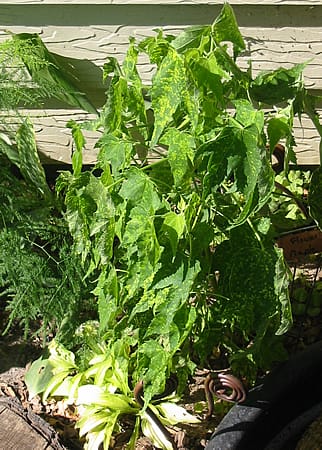
|
Bedding Plants
Flowering Maple
Abutilon hybridum
Although it may be grown outdoors in warmer regions, it is most often grown as a house plant. The flowering maple is not really a maple at all. The Abutilon is also commonly known as a Chinese bellflower or a Chinese lantern.
The blooming season for most Abutilons is from April through June, but they will often flower periodically through the winter as well.
|
Planted in Fern bed next to fountain 2005, 2006
See photo from fall 2005
Fern Bed
|
|
|
|
|
|
|
|

|
Tree & Shrub
Forsythia
The forsythia is a deciduous shrub that can grow up to 8 feet tall. In most species, the branches are slightly arched and decorated with leaves and flower buds in an opposite arrangement. In mid-April the buds explode with bright yellow blossoms. In the fall the leaves mellow to a reddish-purple color.
|
North side of wood shed. Removed 2 bushes in 2004
LOST
|
|
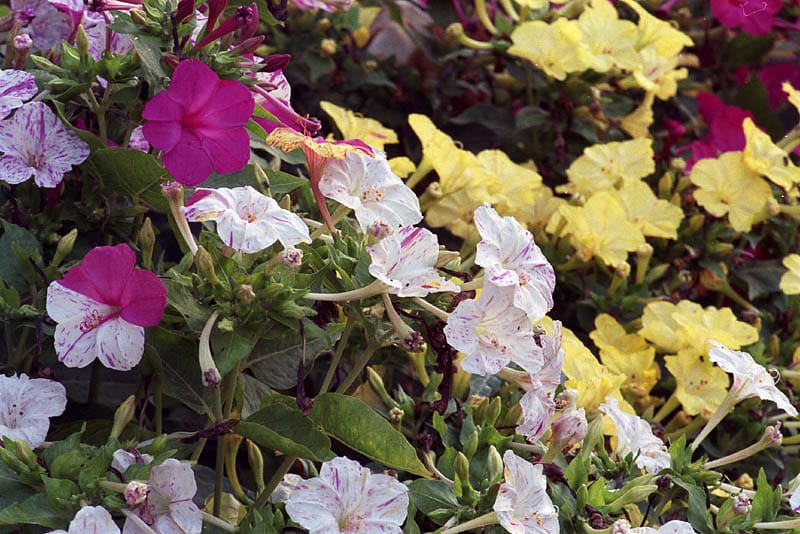
|
Annual Seeds
Four-O’-Clocks
|
Planted seed from Dorothy next to potting bench 2005
|
|
|
|
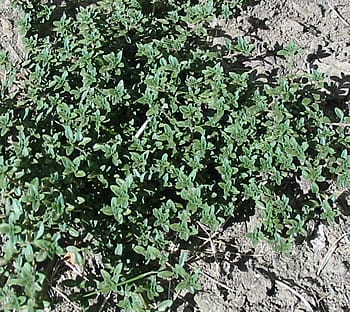
|
Herbs
French Thyme
Narrow green leaves yield a spicy, sweet flavor. Full Sun.
|
Herb Bed
|
|

|
Herbs
Garden Sage
salvia officinalis
Shooting up to three feet with its blooms, garden sage is a purple delight Flower color: purple
|
Driveway
|
|

|
Herbs
Garlic
|
Started from seed fall 2002. Harvest in Summer 2005.
Herb Bed
|
|

|
Bedding Plants
Geranium
Pelargonium
Annual geraniums are popular for their wide range of brilliant flower color and attractive leaves. They can be grown as bedding plants and in containers on decks and patios, in hanging baskets, or in window boxes.
|
Potted plants 2005
|
|
|
|

|
Herbs
German Chamomile
matricaria recutita
Chamomile tea is brewed from dried flowers. The flowers may be used fresh or dried and are best when picked the day they open. Flowers can be picked for several months. Flower color white
|
Herb Bed
|
|
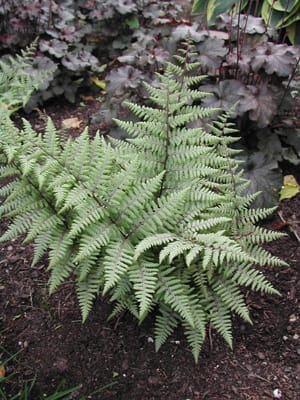
|
Ferns
Ghost Fern
Athyrium 'Ghost'
A garden hybrid of two deciduous ferns, the popular Japanese Painted Fern crossed with a Lady Fern. Its upright triangular fronds have bluish to maroon midribs. The overall appearance is of such a light silvery grey-green that naming it 'Ghost Fern' was inspired. The silveriness is most stunning with new spring growth, hardening to blue-green in summer.
It has such a thick rhizome system that once established it can tolerate a surprising degree of dryness, though it cannot abid much sunlight, & moist well-draining soil is best especially when it is getting started. As a sterile hybrid, it does not produce spoors but is easily propagated by division in spring. Like the Japanese Painted Fern itself, the Ghost Fern can spread to several feet after many years, & will eventually need to be dug up & divided unless there's plenty of room for it to take over.
|
Purchased fall 2005
Fern Bed
|
|
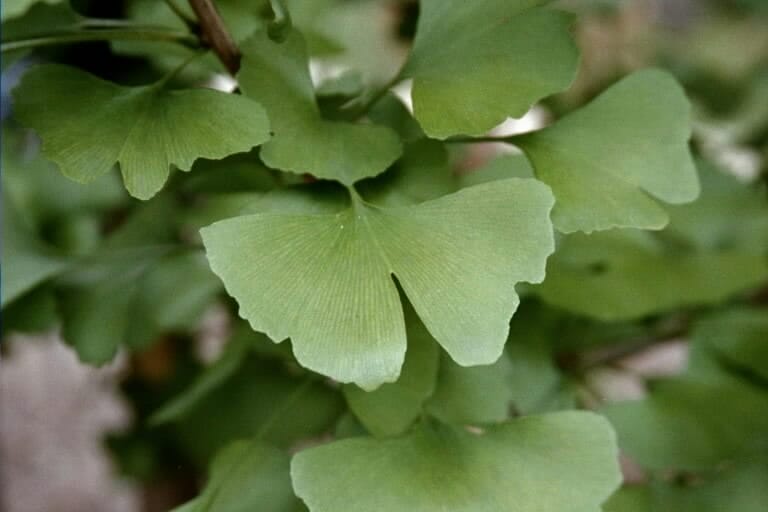
|
Tree & Shrub
Ginkgo
Ginkgo biloba
Undoubtedly one of the most distinct and beautiful of all deciduous trees. The bright green, fan-shaped leaves are actually fern leaves, from the Age of the Reptiles. The leaves can turn a brilliant golden yellow in the fall. One of the oldest trees, growing on earth for over 150 million years and was native in North America at one time. Usually pyramidal in youth, in old age, a well-developed Ginkgo is an impressive sight, forming large picturesque branches and handsome bark. Female trees produce a malodorous fruit after 20 years, and for this reason, usually only male trees have been selected. A durable tree for difficult landscape situations! In western Nebraska the Ginkgo prefers a protected site with supplemental moisture to aid in establishment. We recommend the male selections 'Autumn Gold' and 'Princeton Sentry' for the landscape. 50-60' h, 30-40' w. Hardy to zone 4.
|
Orange Bed
|
|
|
|
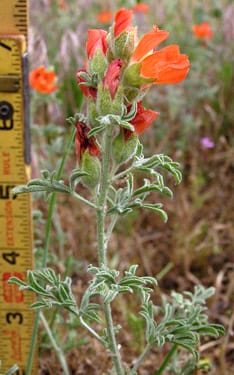
|
Perennials
Globe Mallow
Sphaeralcea coccinea
(Malvaceae )
Semi-desert, foothills. Disturbed areas, woodlands, openings. It loves dry, barren ground and often forms large patches. Leaves are cut in many divisions and are a silver green. "Coccin" is Latin for "scarlet.
Famed 18th century botanist and Professor, Thomas Nuttall, collected this species "From the River Platte to the Rocky Mountains" in 1811 and named the plant Malva coccinea. Per Axel Rydberg renamed it Sphaeralcea coccinea in 1913.
|
Wish List
|
|
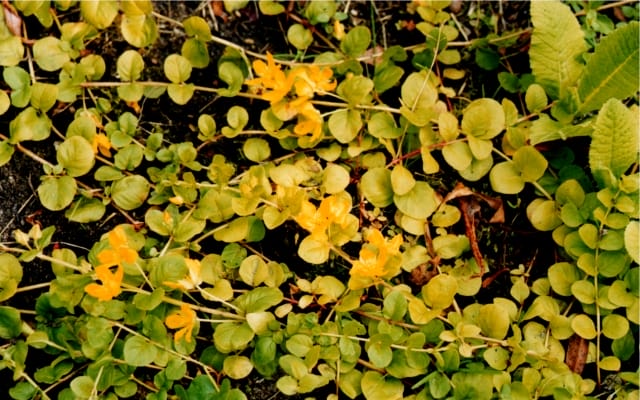
|
Perennials
Gold Moneywort
Lysimachia nummularia 'Aurea'
This easy-to-grow moisture lover is a marvelous low-growing, golden groundcover whose dime-sized leaves give the ground a year round golden color. Gold moneywort is perfect for brightening an area in the garden or interweaving to make some great color combinations... it needs sun to maintain the golden color.
|
Planted 2004 in west bed. Planted 2005 in fern bed around fountain.
Fern Bed
|
|
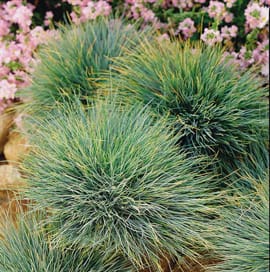
|
Grasses
Gold Toupee Fescue
Festuca glauca 'Golden Troupee'
Mound of soft golden foliage have a fine texture. Thrives in average to dry, well-drained soil in full to part sun.
|
dead 2007.
|
|
|
|
|
|